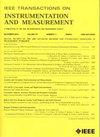高速列车牵引系统状态预测的自监督表示学习
IF 5.6
2区 工程技术
Q1 ENGINEERING, ELECTRICAL & ELECTRONIC
IEEE Transactions on Instrumentation and Measurement
Pub Date : 2025-07-10
DOI:10.1109/TIM.2025.3587364
引用次数: 0
摘要
高速列车牵引系统状态的准确预测是列车安全运行的保障。目前,常用的预测方法是将牵引系统划分为多个设备,并根据每个设备的多传感器信号建立单独的模型。该方法虽然有效,但需要针对不同的预测任务进行重复训练,消耗大量的计算资源,限制了模型应用的灵活性。因此,开发一个通用的学习框架来预测牵引系统内各种设备的状态是至关重要的。为此,本文提出了SiamMTS,一种基于Siamese网络架构的自监督表示学习(SSRL)框架,用于多传感器时间序列信号。SiamMTS通过最小化特征空间中相同传感器序列的不同增强视图之间的距离来进行自监督学习,从而从监测牵引系统的多传感器信号中提取通用时间序列表示,以提高状态预测性能。实验结果表明,SiamMTS在处理多个高速列车牵引系统的数据集时表现良好。预训练阶段得到的编码器为下游任务提供了合理的初始化参数,能够有效预测系统内各种设备的状态。与具有相同编码器架构的监督模型相比,SiamMTS在预测步长为10时,平均均方根误差(RMSE)、平均绝对误差(MAE)和平均绝对百分比误差(MAPE)分别降低了22.27%、23.13%和33.21%;在预测步长为20时,SiamMTS分别降低了15.31%、16.67%和20.53%。此外,SiamMTS预测四种牵引系统设备状态的总计算时间为监督模型的41.31%。本文章由计算机程序翻译,如有差异,请以英文原文为准。
SiamMTS: Self-Supervised Representation Learning for High-Speed Train Traction System State Prediction
Accurate prediction of the high-speed train traction system state ensures safe train operation. Currently, common prediction methods involve dividing the traction system into multiple equipment and establishing separate models based on multisensor signals for each. While effective, this method requires repeated training for different prediction tasks, consuming significant computational resources and limiting the flexibility of model application. Therefore, developing a universal learning framework for predicting the state of various equipment within the traction system is crucial. To this end, this article proposes SiamMTS, a self-supervised representation learning (SSRL) framework based on a Siamese network architecture for multisensor time-series signals. SiamMTS performs self-supervised learning by minimizing the distance between different augmented views of the same sensor sequence in the feature space, thereby extracting a universal time-series representation for improved state prediction performance from the multisensor signals monitoring the traction system. Experimental results demonstrate that SiamMTS performs well when processing datasets from multiple high-speed train traction systems. The encoder obtained during its pretraining phase provides reasonable initialization parameters for downstream tasks, enabling effective prediction of the state of various equipment within the system. Compared with the Supervised model with the same encoder architecture, SiamMTS reduces the average root mean square error (RMSE), mean absolute error (MAE), and mean absolute percentage error (MAPE) by 22.27%, 23.13%, and 33.21%, respectively, at a prediction step of 10 and by 15.31%, 16.67%, and 20.53%, respectively, at a prediction step of 20. In addition, the total computation time of SiamMTS in predicting the state of four traction system equipment is 41.31% of that required by the Supervised model.
求助全文
通过发布文献求助,成功后即可免费获取论文全文。
去求助
来源期刊

IEEE Transactions on Instrumentation and Measurement
工程技术-工程:电子与电气
CiteScore
9.00
自引率
23.20%
发文量
1294
审稿时长
3.9 months
期刊介绍:
Papers are sought that address innovative solutions to the development and use of electrical and electronic instruments and equipment to measure, monitor and/or record physical phenomena for the purpose of advancing measurement science, methods, functionality and applications. The scope of these papers may encompass: (1) theory, methodology, and practice of measurement; (2) design, development and evaluation of instrumentation and measurement systems and components used in generating, acquiring, conditioning and processing signals; (3) analysis, representation, display, and preservation of the information obtained from a set of measurements; and (4) scientific and technical support to establishment and maintenance of technical standards in the field of Instrumentation and Measurement.
 求助内容:
求助内容: 应助结果提醒方式:
应助结果提醒方式:


